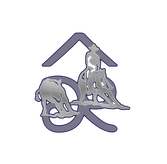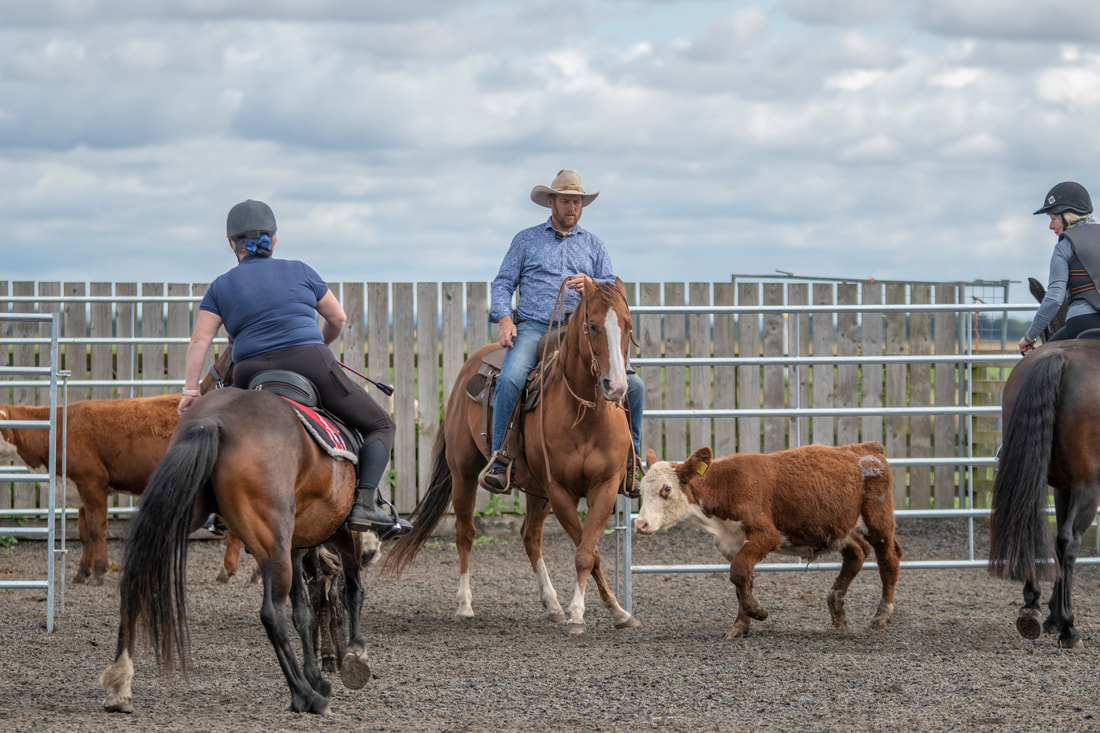Welcome
We are hosting a 2 Day Working Equitation Clinic & Cattle Working Clinic with Holly Barber Level 4 Coach & Guy Robertson
Obstacles
- introduction to the obstacles
- what is required to compete at Novice level
- marks at each obstacles
- recommendations on how to achieve more marks
Cattle -
- introduction to cattle
- how the competition is set up
- competition rules for working cattle
- cutting a cow alone and working as a team to pen the cow
- putting it into practise with a timed round
Format
Day 1
Group 1 - 2 hours Obstacles
Group 2 - 2 hours Cattle
Lunch
Group 2 - 2 hours Obstacles
Group 1 - 2 hours Cattle
Day 2
Group 1 - 1 hours Obstacles (approx time)
Group 2 - 1 hours Cattle (approx time)
Group 1 - 1 hours Cattle (approx time)
Group 2 - 1 hours Obstacles (approx time)
Lunch
Competition Practice
Obstacles & Cattle Working
Suitable for any rider in any Tack
Participant/Rider:
What's included: Tuition, One pen
What's not included: Hook up £15 per night Stabling with straw £15 per night
Need Accommodation? Contact us [email protected]
Accommodation based onsite:
http://thefarmhousebandb.co.uk
A little about Working Equitation from the BWE website.....
The sport of Working Equitation is the ultimate outcome of the development of the horse as a working animal.
Horses were originally domesticated and trained for farming and herding purposes, work which required them to respond to their rider whatever terrain and difficulties they may face.
The sport is a highly refined and sophisticated demonstration of these activities, but with the added required quality of elegance and speed of execution.
It comprises 3 phases. Dressage, Ease of handling, Speed and at International level,
cattle penning .
The dressage phase is much like that of a normal dressage test although some of the movements are performed slightly differently. At the highest level it involves some Grand Prix movements being performed with the use of just one hand.
The ease of handling test consists of a course of obstacles, replicating those that may be found when working in the countryside. For example, a gate, a bridge and a jump. There are also other more technical obstacles such as the parallel slalom, straight slalom and barrels all of which at Advanced level require the horse and rider to perform flying changes in specific places in order to perform the obstacle correctly. Riders are given a mark out of ten for precision, submission and ease of movement for each obstacle.
The speed test involves some or all of the same obstacles tackled in the ease of handling test but is purely marked on the time it takes for the horse and rider to complete to course. Time faults and bonuses can occur according to specific obstacles
Working Equitation is a real test of the horses temperament and training, the riders skill and ability and of course the relationship between horse and rider.
The sport is already well established and internationally represented by many countries including Brazil, Mexico, France, Austria, Sweden, Italy, Portugal and of course, Great Britain!
The sport of Working Equitation is the ultimate outcome of the development of the horse as a working animal.
Horses were originally domesticated and trained for farming and herding purposes, work which required them to respond to their rider whatever terrain and difficulties they may face.
The sport is a highly refined and sophisticated demonstration of these activities, but with the added required quality of elegance and speed of execution.
It comprises 3 phases. Dressage, Ease of handling, Speed and at International level,
cattle penning .
The dressage phase is much like that of a normal dressage test although some of the movements are performed slightly differently. At the highest level it involves some Grand Prix movements being performed with the use of just one hand.
The ease of handling test consists of a course of obstacles, replicating those that may be found when working in the countryside. For example, a gate, a bridge and a jump. There are also other more technical obstacles such as the parallel slalom, straight slalom and barrels all of which at Advanced level require the horse and rider to perform flying changes in specific places in order to perform the obstacle correctly. Riders are given a mark out of ten for precision, submission and ease of movement for each obstacle.
The speed test involves some or all of the same obstacles tackled in the ease of handling test but is purely marked on the time it takes for the horse and rider to complete to course. Time faults and bonuses can occur according to specific obstacles
Working Equitation is a real test of the horses temperament and training, the riders skill and ability and of course the relationship between horse and rider.
The sport is already well established and internationally represented by many countries including Brazil, Mexico, France, Austria, Sweden, Italy, Portugal and of course, Great Britain!
Robertson Horse Training and Guy Robertson Horsemanship
Terms and Conditions
1. All persons attending this clinic/lessons, whether participating or as a spectator, do so at their own risk. The Organisers and Landowners do not accept responsibility for any accidents to persons, their animals or property. Entries accepted & admission granted subject to these conditions
2. Only those booked onto the clinic may attend due to being limited on numbers.
3. All participants are strongly advised to ensure that they carry adequate third party insurance cover.
4. Hard Hats up to current standard MUST BE WORN whilst mounted or handling any horse. The wearing of gloves and Back Protectors (to the current safety standard) is recommended.
5. NO DOGS due to having our own farm dogs onsite.
6. Cancellation by participants will still require a full payment - unless your place can be filled from a waiting list. No refunds or transfers.
7. No stallions (unless it is a private lesson)
8. Strictly NO RECORDING devices are to be used, you may be asked to leave the venue & delete the footage.
9. ALL horses much be vaccinated against Equine Influenza.
Robertson Horse Training and Guy Robertson Horsemanship
Terms and Conditions
1. All persons attending this clinic/lessons, whether participating or as a spectator, do so at their own risk. The Organisers and Landowners do not accept responsibility for any accidents to persons, their animals or property. Entries accepted & admission granted subject to these conditions
2. Only those booked onto the clinic may attend due to being limited on numbers.
3. All participants are strongly advised to ensure that they carry adequate third party insurance cover.
4. Hard Hats up to current standard MUST BE WORN whilst mounted or handling any horse. The wearing of gloves and Back Protectors (to the current safety standard) is recommended.
5. NO DOGS due to having our own farm dogs onsite.
6. Cancellation by participants will still require a full payment - unless your place can be filled from a waiting list. No refunds or transfers.
7. No stallions (unless it is a private lesson)
8. Strictly NO RECORDING devices are to be used, you may be asked to leave the venue & delete the footage.
9. ALL horses much be vaccinated against Equine Influenza.









